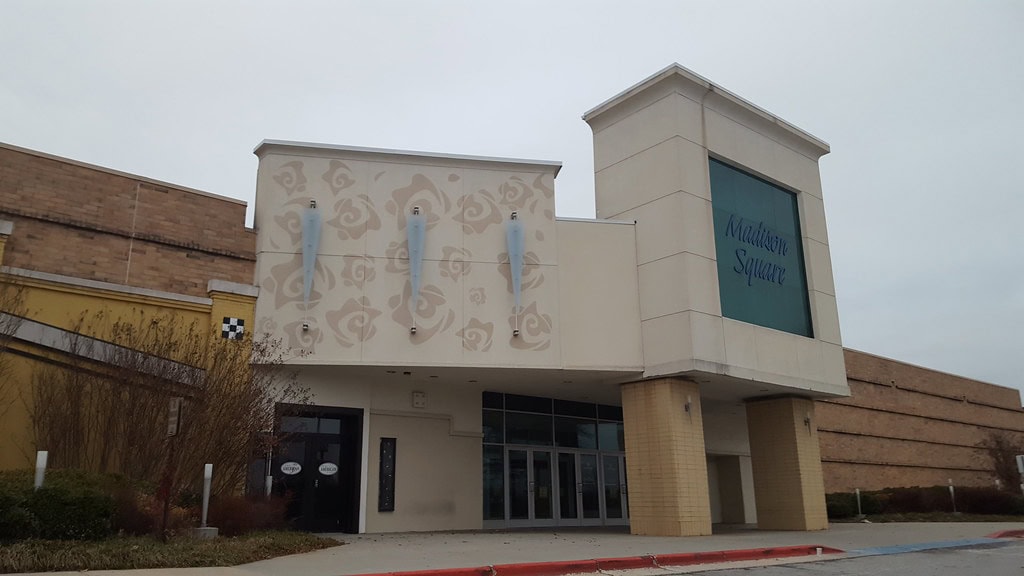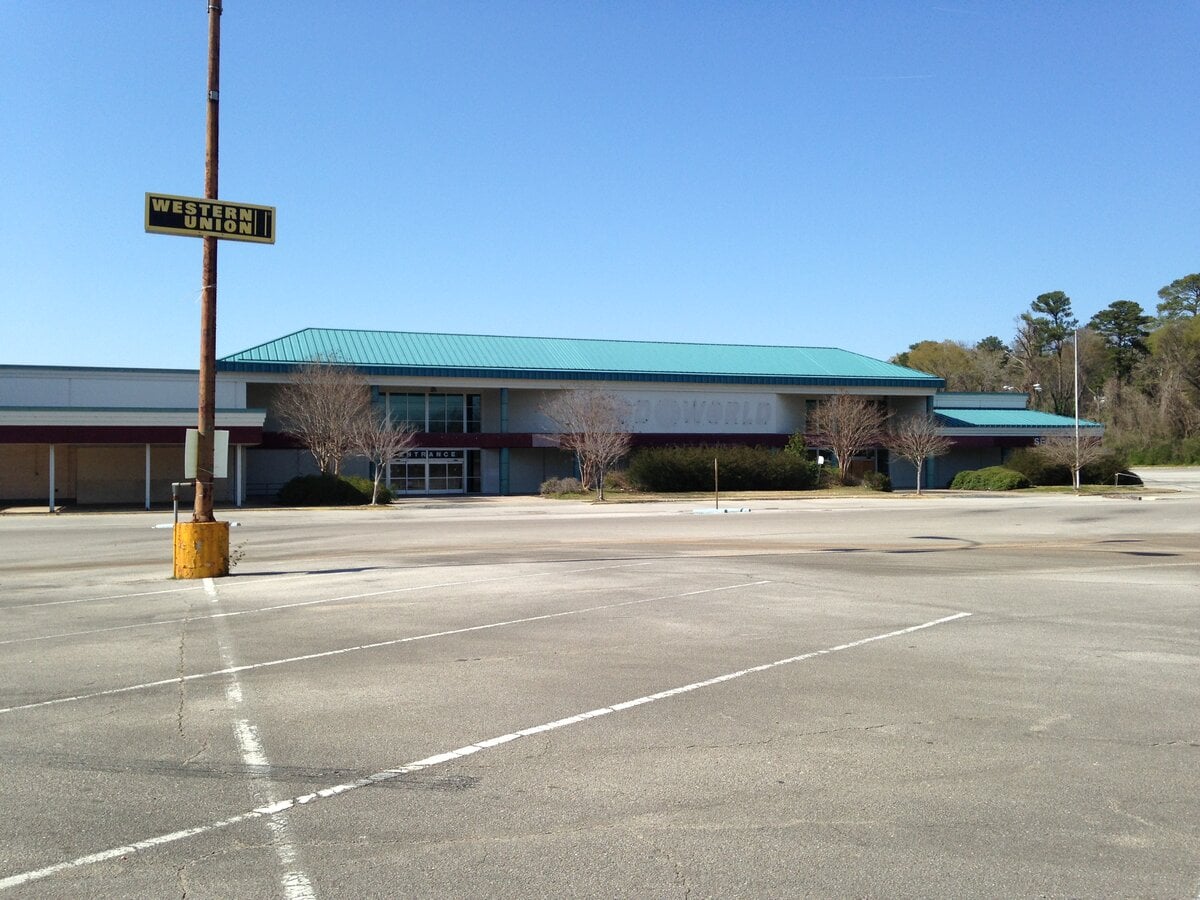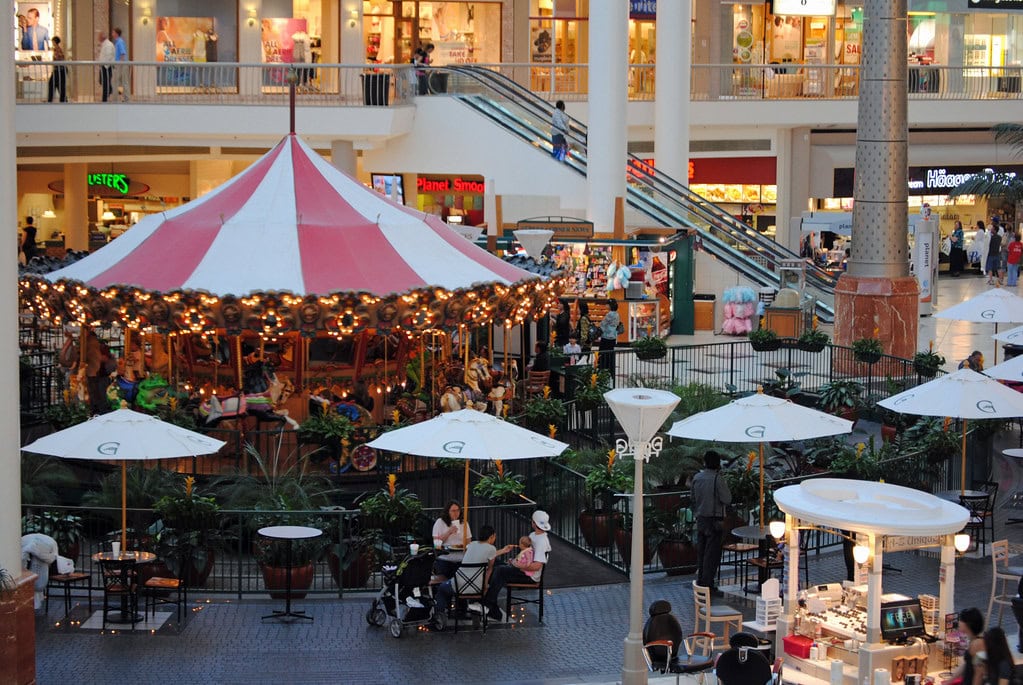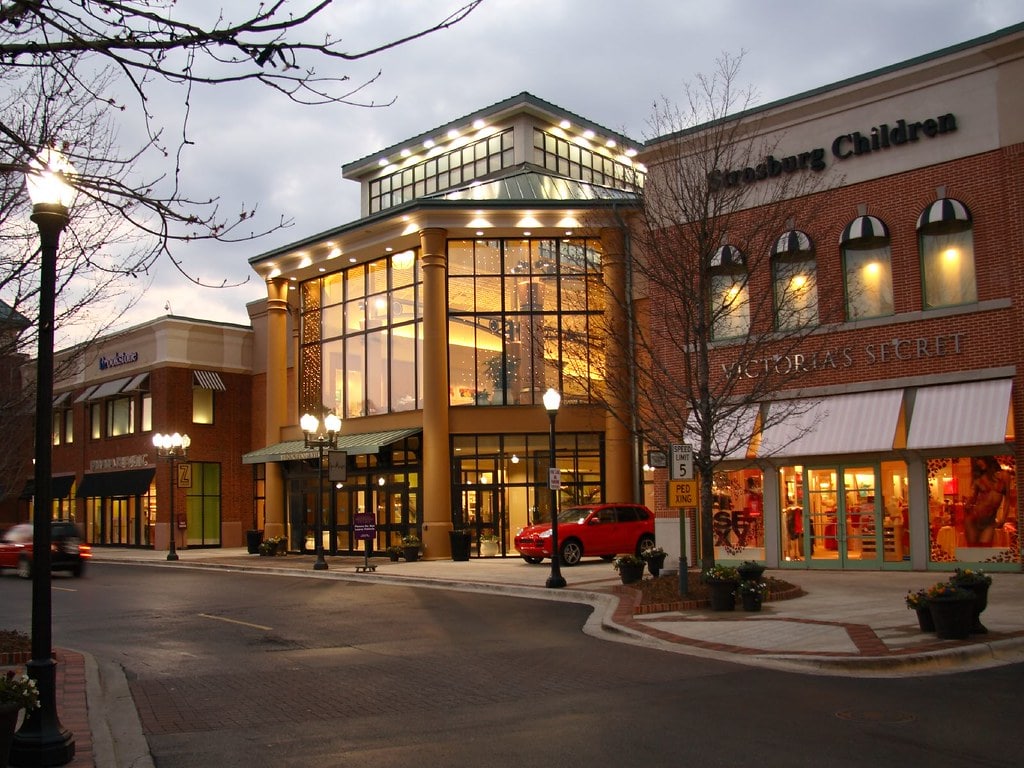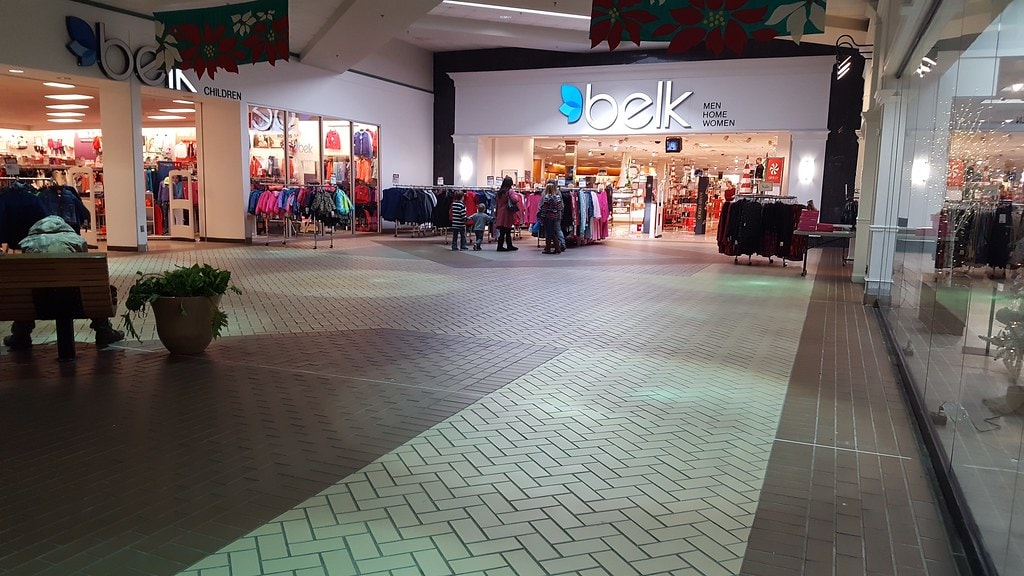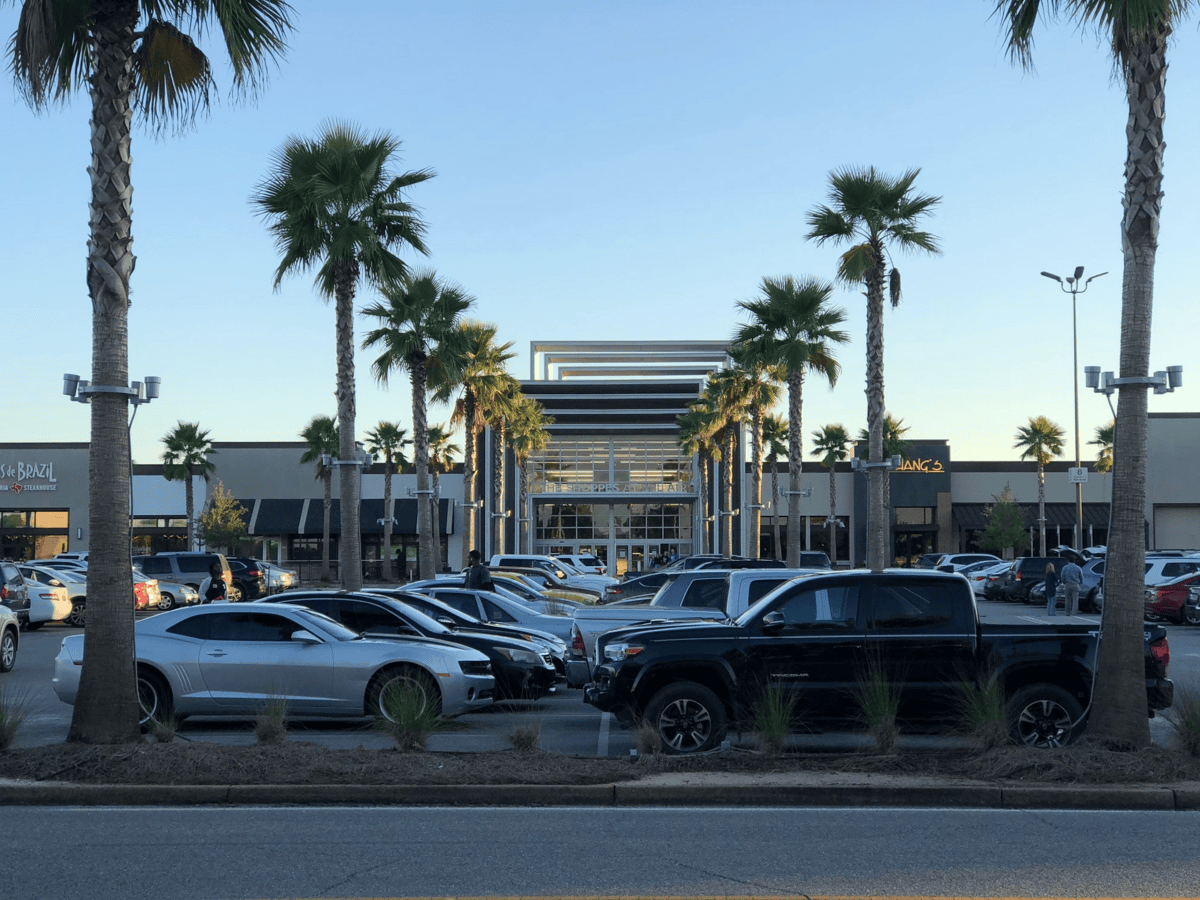Westlake Mall: A Lake, A Mall, A Business Park
On a low stretch of land between the Bessemer Superhighway and Interstate 20/59, there is a building that has been, in turn, a lake, a pleasure park, a neighborhood mall, a dead mall, an improvised disaster-relief depot, a car lot, a rumor, and, if all goes to plan, an industrial park with a superhero name.
The Mall at Westlake, almost always called simply Westlake Mall or Westlake, never had the glamour of the big Birmingham centers. It was too local, too blue collar, too practical.
Today, the shell is being marketed as Marvel City Business Park, a phrase that sounds like something a suburban teenager might design for a school project on urban renewal.
Yet the bones of the place, and the water that once sat under it, tell a story that keeps circling back to the same problem: What do you do with a piece of land when the original idea for it has run out of time?
Westlake Mall and the lake beneath it
Before there was a mall, there was West Lake Park. This was a man-made lake, built in the 1890s on Hall's Creek and filled by nearby springs.
A railroad bordered one side, while the growing city of Bessemer bordered the other.
The park gave working people a place to relax. They could swim, boat, fish, skate, bowl in the pavilion, and dance under lights that must have looked amazing at the time.
In 1919, the park began holding a yearly Bathing Revue, where people showed off new swimsuits from a downtown store while Jack Linx & His Society Serenaders played music in the dance hall.
This brought together new styles and local pride. In 1934, workers from a government jobs program drained and cleaned about 40 acres of wet, muddy land around the lake, digging thousands of feet of ditches.
In the 1940s, buses brought families from downtown Bessemer to enjoy the park.
By 1949, the park was trying to sell its modern-looking small train, which had a Ford V-8 engine and 870 feet of track. This showed that the old amusement business was having a hard time.
Eventually, the lake was filled in, and the land was flattened for something new.

From the 1969 opening to the modest heyday glow
In 1969, Indianapolis developer Mel Simon built a T-shaped, one-story indoor mall on the newly filled-in lake bed.
Sears opened on the southeast side, Loveman's of Alabama on the southwest, and discount store W. T. Grant's on the northwest, with local stores like Sokol's and Aland's along the hallways inside.
The main entrance was a long, open walkway that led shoppers toward Sears. A simpler side entrance led to the Loveman's area.
Westlake Mall was never meant to stand out; it was a roughly 300,000-square-foot mall that served a city known for making steel and cars.
For its first 15 or 20 years, it did its job. It brought in regular shoppers from West Jefferson County, attracted teenagers to its tiled areas, and let local stores sit alongside national brands.
In April 1970, George Wallace held a re-election rally here, bringing about ten thousand people to the parking lot.
This big crowd showed how popular the mall was in its early days, as well as something about the state's politics.
Politics, crime, and the first slow cracks
At first, the problems seemed technical. Grant's closed in 1976, and Consumer Warehouse Foods, a discount grocery run by Bruno's, took over its spot.
That store changed names several times, becoming Bruno's, then Foodmax, then Food World.
Around 1980, Loveman's shut down, and Pizitz, another Birmingham department store, moved in to try to keep up with changing retail trends.
Longtime local stores like Sokol's and Aland's quietly left the mall as well.
By the mid-1980s, Penn Mutual Life Insurance Company, which had a stake in the property, suggested turning Westlake Mall into a factory outlet center to keep shoppers from leaving Bessemer.
The plan was more of a proposal than a real solution. Then, the mall faced the kind of news it could not afford.
In November 1983, an 18-year-old woman was abducted near the mall. Years later, DNA evidence would overturn the original case.
Whether fair or not, people started to worry about safety at the mall. By 1989, all three original anchor stores were gone. The mall was still open, but it was mostly empty.

Bruno's big bet in a shrinking mall shell
If there was a main character late in the Westlake Mall story, it was Bruno's.
After trying the Consumer Warehouse idea in the old Grant's space, the grocery store expanded in 1994 by opening a 60,000-square-foot main store in the old Sears space, the biggest store in the chain.
The plan was to call it FoodMax, and later Food World. This supermarket brought new life to the building.
However, one consequence was that the mall entrance by Sears was closed off, with the inside walkway now hidden behind grocery shelves.
For a while after Bruno's expansion in 1994, Westlake Mall became a mix of a neighborhood grocery store and a much smaller mall.
Goody's Family Clothing moved into the old Loveman's/Pizitz spot, so the building then had two main stores.
Over the years, the lineup of smaller stores changed, including names like New Ideal, Radio Shack, Lorch's Diamond Center, Handy TV and Appliance, Ronnie Marchant Furniture, World Gym, and Seafeast Restaurant.
From 1993 to 2007, the Magic City Railroad Club set up a detailed model-train display inside, a careful, small version of the activity that used to fill the building.
In the late 1980s, the main entrance was updated with glass blocks over old concrete, but stains appeared faster than the new paint lasted.
Flea markets, tornado aid, and long vacancy
By the late 2000s, the situation had hardened. Goody's left. The old Grant's corner, which had once moved canned goods and bulk cereal, drifted toward emptiness.
Food World was the last serious draw. When Bruno's went into bankruptcy in 2009 and closed its Westlake Food World, the air went out of the building.
The mall, which had been open for roughly forty years, closed along with it.
The owner at that point, Bessemer used-car dealer Anthony Underwood, had bought the property a few years earlier and was trying everything: leasing chunks to discounters, carving out a 91,000-square-foot flea market in one anchor, operating a party room, pitching the shell as a call center or warehouse.
A handwritten sign in 2009 announced that even the flea market had folded.
After a devastating tornado outbreak on April 27, 2011, Underwood opened both Westlake Mall and his nearby WaterMark Place center as staging areas and storage for displaced businesses, turning the dead mall into an improvised civic utility.
Between those moments, the parking lot was sometimes used as overflow storage for Mercedes vehicles from the plant in nearby Vance, a luxury name parked against stained concrete and boarded doors.

Selling the ghost: how Range Light arrived
Throughout the 2010s, Westlake was mostly remembered, filmed by drones, and talked about in debates. Jefferson County considered turning the site into a Bessemer courthouse.
Urban-exploration videos from that period showed the inside, where old tile and glass blocks from past decades were covered in mold.
Local nostalgia posts frequently mentioned Consumer Warehouse Foods, Sears, and teenagers speeding in the back lot. The building remained closed up; several doors were blocked, and nature slowly started to take it apart.
In December 2024, a Bessemer city council candidate said he had met with new owners and that the property would be called Marvel City Business Park, providing an early hint at the new name.
By May 2025, the situation became clearer: Range Light Investment Partners, a company from Ohio, purchased the 323,000-square-foot building for about 3 million dollars.
The company had a simple idea.
Malls built between the 1960s and 1990s were like the shipping centers of their time; the same features that once sold clothes and appliances could now be used to move boxes and factory-made parts.
Marvel City Business Park and the future
Range Light renamed the property Marvel City Business Park and promised a major renovation.
The plan: remove the inside mall decorations, take off old outside store features, put on a new roof, and improve the lighting and electrical systems.
The inside would be divided into industrial spaces of about 30,000 to 50,000 square feet, with loading doors and drive-in access made for smaller manufacturers and shipping companies that do not need a huge building.
Outdoor storage areas and lots of old parking spaces would also be included.
The company planned to spend more than 10 million dollars on the project, with construction happening in stages and the first spaces ready to use by the end of 2025.
Commercial ads now offer the site for outdoor storage and warehouse space, showing that the property is at least starting to be used again, even if the inside work and renting are still just beginning.
In a city where Westlake once meant a certain kind of middle-class weekend, the hope is that Marvel City might mean weekday jobs instead.
It is not sentimental, but then, neither was filling in a lake to build a mall.

